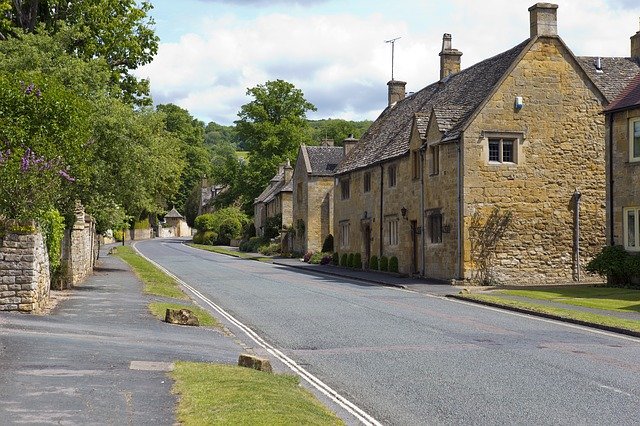
Cavity Wall – Construction, Insulation, Problems.
A Guide to Cavity Walls
If you are considering getting your property insulated, you have probably heard the term cavity wall. But what is it exactly, what purpose does it serve, and why should it be insulated?
What is a Cavity Wall?
A cavity wall is constructed with two separate walls that are used as a single wall. There is a space or cavity between the two walls. The two walls are known as the leaves of a cavity wall, with the outer wall known as the external leaf and the inner wall known as the internal leaf. Sometimes, the cavity wall is known as a hollow wall.
What is the Purpose of a Cavity Wall?
Cavity walls are used for a range of different purposes, including:
Cavity Wall Thermal Insulation:
The air that circulates in the wall cavity acts as a non-conductor of thermal heat. As a result, it minimises the transmission of heat from the external face of the interior leaf in the cavity wall. This significantly improves the thermal insulation in a building.
Cavity Wall Damp Prevention:
The cavity wall aids in the elimination of moisture penetration from the outer leaf to the inner leaf, helping to keep the inside of the building free from damp problems. This is possible due to the fact that any moisture that penetrates through the outer leaf will be evaporated by the air inside of the cavity when it is kept well-ventilated.
Efflorescence:
Since the cavity prevents dampness from penetrating the wall, the inner wall of the cavity, which is always a load-bearing wall, has a significantly reduced risk of efflorescence.
Sound Insulation:
The air inside the cavity wall will act as a cushion that absorbs sound. Buildings with cavity walls are more soundproof compared to those without, with considerable external noise absorbed in the cavity.
Economy:
In construction, cavity walls are found to cost around 20% less compared to a solid wall of the same thickness.
Cavity Wall Detail: Size and Construction:
The cavity between the inner and outer leaf should be no less than 50mm and no more than 75mm. The cavity may be either ventilated or sealed. A ventilated cavity is more effective for preventing damp, while sealed cavities are more effective for providing thermal insulation in the building. Ventilation of the cavity is achieved using air bricks in the outer leaf at the top and bottom of the cavity.
Since the cavity below a damp proof course does not serve any purpose at this the level of the foundation concrete block, the brickwork in the foundation will typically be constructed as a solid wall, and the cavity wall is started at ground level. This helps to draw out any condensed moisture below this level.
Cavity Wall Construction Details:
The cavity walls have an inner and outer leaf, with a hollow space in between them which is known as the cavity. The cavity width generally varies from 50-75mm. The outer leaf of the wall is usually a non-load-bearing wall and is half-brick. However, the inner leaf is typically always load-bearing and should be no less than one brick in thickness.
Bonded bricks or wall ties are used to connect the two parts of the wall. When metal wall ties are used, they should be spaced at horizontal intervals or around 0.90mm, and at vertical intervals of around 450mm. Wall ties should be arranged in a staggered fashion.
Cavity Brick Wall History:
Cavity walls became a common feature for external walls of almost all small buildings between 1920-1940. They were also common in Greek and Roman times but were developed in the 18th and 19th centuries as a component of contemporary construction. However, even during this time, the construction of cavity walls was rare and when it was used, would generally involve two masonry leaves that were bonded by headers spanning the cavity. The use of metal wall ties to connect the two leaves was only introduced in the second half of the 19th century, and the trend became more common at the beginning of the 20th century.
Cavity Wall Advantages:
Cavity walls are often used in construction because they have many advantages. These include:
- No direct contact between the inner and outer leaf except for at the wall ties means that there is a very low possibility of moisture being able to penetrate from the outer leaf to the inner leaf. Well-constructed cavity walls can withstand heavy rain while preventing moisture from reaching the inner wall surface.
- The air in the cavity is a non-conductor of heat, which reduces the transmission of heat from the external to the internal face. Because of this, cavity walls are the ideal option for temperate control in rooms in hot climates.
- Cavity walls offer good sound insulation. A 225mm cavity wall will have a higher sound insulation value compared to a standard thick brick wall, significantly reducing the effect of external sound.
- Cavity walls can reduce the risk of moisture condensation, they are fire-resistant, and offer protection against efflorescence.
Cavity Wall Disadvantages:
Although cavity walls are commonly recommended in construction for their benefits, they do have some disadvantages to consider. These include:
- The construction of a cavity wall requires expert supervision.
- A vertical damp-proof course to all openings is required
- Expert designers and highly-skilled tradespeople are the basic requirements for the construction of a well-built cavity wall, therefore, they are often more expensive to construct compared to a solid wall.
- Regardless of the insulation material used, there is always some level of risk that the moisture will be able to penetrate inside and lead to damp.
- The saturation and settlement of insulation materials used to fill the cavity wall can lead to thermal-bridging, which is when heat moves across an object that is more conductive compared to other materials around it.
- There is the risk that cavity wall insulation may leave unfilled air pockets, which can lead to cold spots that attract condensation on the inner walls.
- Cavity insulation will make the outer leaf colder and therefore wetter. This can lead to rusting of the wall ties being sped up. If the wall ties must be replaced, there is no satisfactory way to refill holes further in the insulation regardless of the insulation material used.
- Many buildings have mortar droppings on the wall ties within the cavity, which can result in penetrating moisture and dampness.
- The insulation thickness is restricted based on the cavity width.
What is Cavity Brick Wall Insulation?
Cavity walls are often filled with various materials to provide greater thermal insulation to the property. There are several materials that can be used, and the most common include:
Rockwool or Mineral Wool:
This is the type of insulation that is most commonly used to insulate the cavity wall in residential buildings. It is made from igneous rick that is heated and spun to create a fibre material. It is then blown into the cavity wall, where it occupies the cavity space between the inner and outer leaf. Rockwool is a water-resistant material and can prevent moisture intrusion from rain, which will usually leak through the wall’s outer leaf to reach the inside leaf.
Cavity Foam Insulation:
Urea-formaldehyde foam was commonly used to insulate cavity walls; however, it is becoming a less popular option. The insulation material can be added via small holes that are drilled into the walls or the brickwork and can be used as both insulation for the cavity wall and a stabilisation material for wall structures where the wall tiles have been futile.
Polystyrene Beads:
Expanded polystyrene beads, also known as EPS beads, can be used to insulate cavity walls. They are pushed into the cavity of the wall and mixed with an adhesive to ensure that the beads hold together and avoid the risk of spilling outside of the wall. This type of insulation is usually a popular option for narrower cavity walls, where it is easier to use compared to Rockwool insulation. It is also a preferred option for some stone-built houses.
Cavity Wall Insulation Problems:
Cavity wall insulation that has been installed poorly can lead to problems, with damp being among the most common. Some cavity wall insulation has led to expensive repair work, especially in buildings where cavity wall insulation should have never been installed in the first place, including attempts to add cavity wall insulation to solid brick walls, and poorly filled cavities that result in cold spots and internal condensation in the home. In some cases, cavity wall insulation might block the ventilation bricks in rooms such as the bathroom, which can lead to condensation problems. When the cavity is bridged by insulation, it may also allow moisture to penetrate from the outer leaf to the inner leaf, which can lead to internal dampness.
The construction of a cavity wall is a common way to control moisture and dampness in a home, along with providing sound insulation and thermal insulation benefits. Cavity walls can be filled with insulation material for further benefits.
